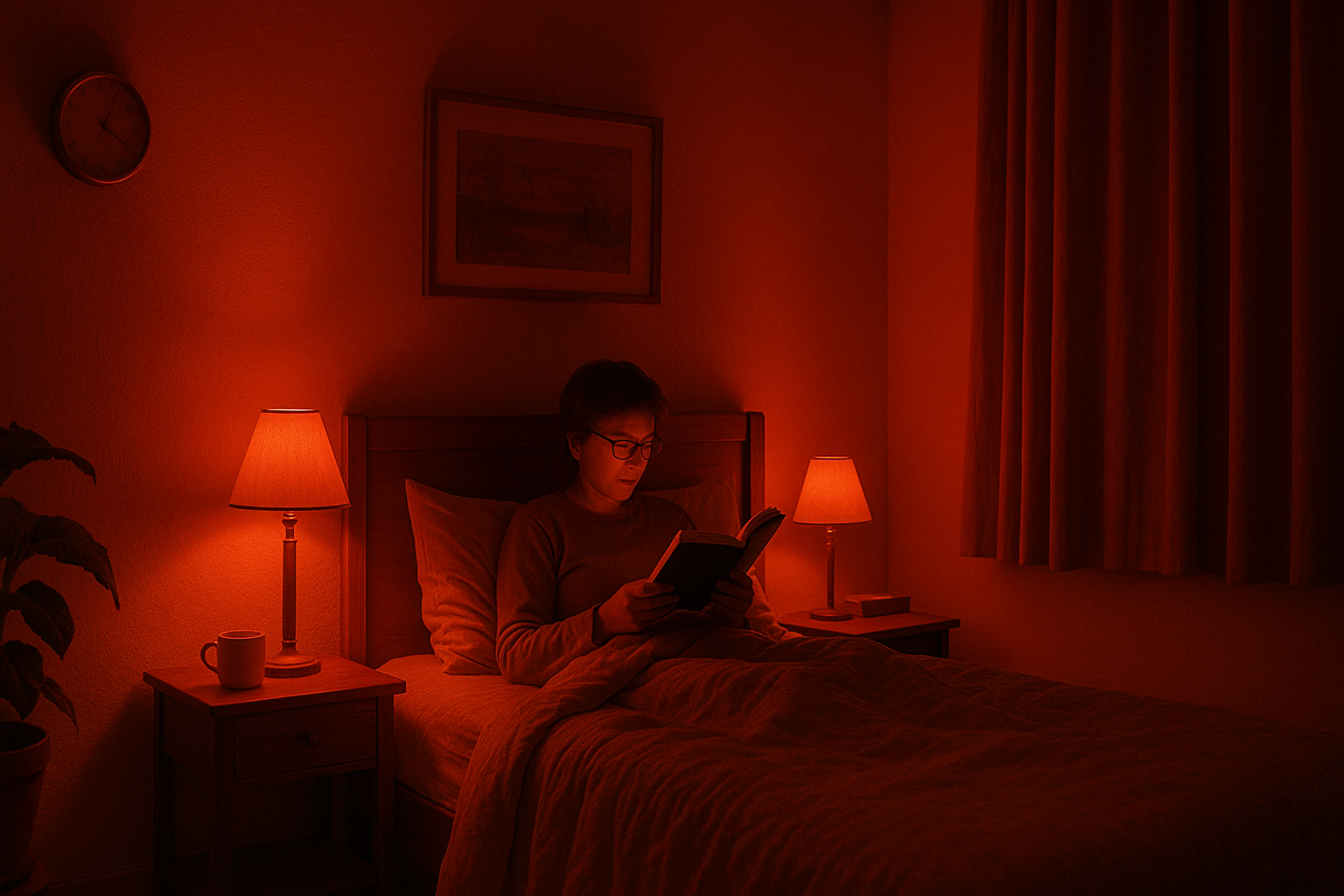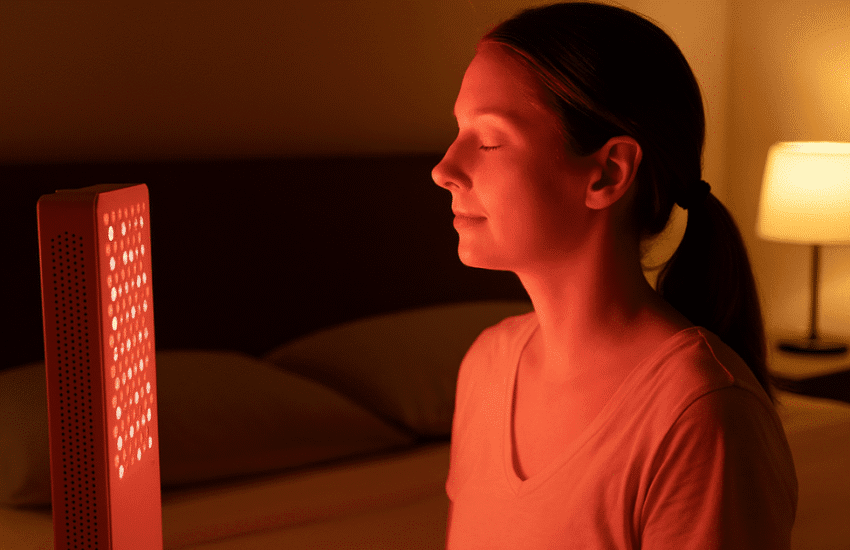5 Benefits of Red Light at Night: Improve Your Sleep
Red light in the evening can feel like a small luxury—but it does a lot more than just set a cozy mood. Unlike the harsh glow of phone screens and LED bulbs, using red wavelengths is one of the most effective ways to prepare your body for deep, restorative sleep.
Here’s why you might want to try swapping in a red bulb a few hours before bed, and how it can help with drifting off more easily and waking up feeling genuinely refreshed.
1. Red Light Naturally Supports Melatonin Production at Night
Think of melatonin as your body’s natural lullaby. As daylight fades, your pineal gland begins releasing it, guiding you into deeper sleep.
But those bright screens and overhead lights? They’re like an alarm clock going off in your brain—stopping melatonin in its tracks.
Red light, on the other hand, works in harmony with your biology. I swapped my bedside lamp for a simple red bulb and within nights noticed I wasn’t scrolling late into the evening. My brain got the “time to unwind” message loud and clear, and I finally ended the cycle of tossing and turning.
2. Red Light’s Gentle Effect on Your Eyes After a Long Day
After hours of staring at spreadsheets or binge-watching, your eyes need a break.
Red light’s longer wavelengths aren’t as taxing on retinal cells, so your eyes can relax rather than staying on high alert. If you enjoy reading before sleep, position a low-wattage red lamp to the side of your book.
It’s like turning down the volume on bright light—and your eyes will thank you by feeling less dry and irritated. No more squinting under a glaring white bulb; just soft illumination that lets you focus without the strain.
3. How Red Light Helps Create the Right Environment for Sleep
Ever notice how watching a sunset relaxes you into evening? Red light taps into the same instinct. That warm glow signals your nervous system to shift into “rest” mode: cortisol dips, and your parasympathetic branch takes over.
Picture walking into a room bathed in gentle crimson hues—your shoulders unclench, and your mind starts to quiet.
For best results, install dimmable red bulbs in lamps around your bedroom. About an hour before lights-out, dial them down so your body has time to respond. This simple ritual can turn even a cramped apartment into a restorative retreat.
4. How Red Light at Night Helps To Maintain Your Circadian Rhythm
Your body clock relies on light cues: bright during the day, dark at night.
Blue light—common in daylight and electronics—tricks your suprachiasmatic nucleus (the brain’s timekeeper) into thinking it’s daytime even when it’s not.
Red light, especially in the 630–700nm range, bypasses that “wake up” trigger. Shift workers or frequent flyers know this well: red light exposure makes it easier to adjust when schedules flip-flop or time zones shift. Keeping your circadian rhythm on track isn’t just about sleep; it also supports mood, metabolism, and immune health.
5. Red Light Can Help You to Navigate Nighttime Safely Without Waking Your Brain
Middle-of-the-night bathroom trips often end up being full-blown awakenings. Flip on a white light, and your brain thinks it’s morning—good luck falling back asleep.
A small red night light along the hallway or by the bathroom door gives just enough glow to see without jolting your system awake. Parents love this for late-night check-ins on little ones: the soft red hue provides comfort without wrecking everyone’s sleep. It’s a low-cost upgrade that really pays off.
Easy Tips for Adding Red Light to Your Evening Routine
You don’t need to retrofit your whole home to see benefits.
Start with one red LED bulb in your bedroom or bathroom. Most standard fixtures can accommodate them, and quality red bulbs typically cost under $20.
Consider smart bulbs if you want to automate the transition. Many smart lighting systems can gradually shift from bright white during the day to warm red in the evening.
Use red light filters on your devices as a backup option, though dedicated red bulbs are more effective than software filters.
Time it right by switching to red light about 2-3 hours before your intended bedtime. Keep the brightness low—around 40 watts or less provides adequate light for most evening activities.
Combining red light with solid sleep hygiene can amplify the effect. Pair it with a cool room temperature, blackout curtains, and a wind-down ritual that doesn’t involve screens. Over time, your body will learn to recognize that red glow as the cue to start slowing down, which may help with insomnia symptoms and promote deeper, more restorative sleep.
The Bottom Line
Making the switch to using red light in the evening is one of the simplest tweaks you can make for better sleep and overall wellbeing. By preserving melatonin, easing eye strain, and keeping your circadian rhythm humming along, red wavelengths work with your body instead of against it.
Start small—maybe just one red lamp in your bedroom or bathroom—and start noticing how your sleep quality changes. For most of us, this gentle shift in lighting becomes a game-changer: an affordable, science-backed step toward truly restorative rest.
If sleep still eludes you, though, it’s always wise to check in with a healthcare professional. But give red light a try—you may discover it’s exactly the relaxing ritual you’ve been missing.


